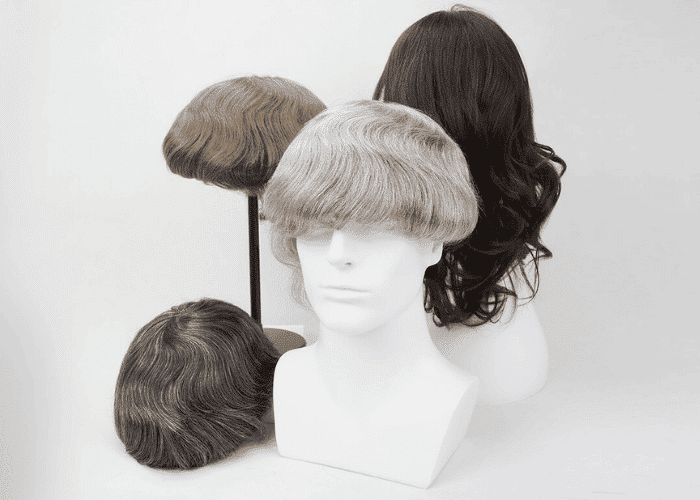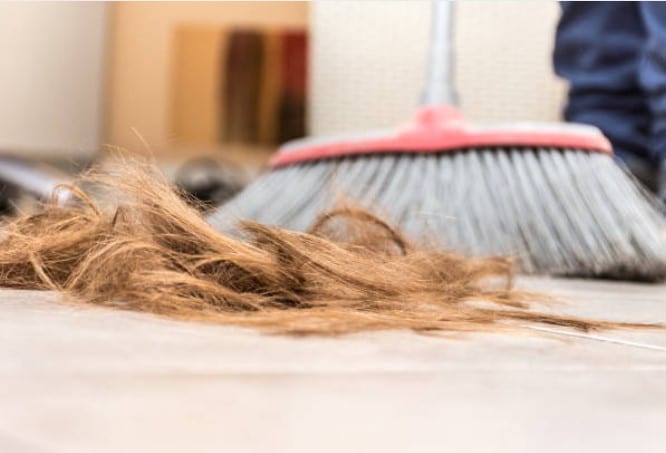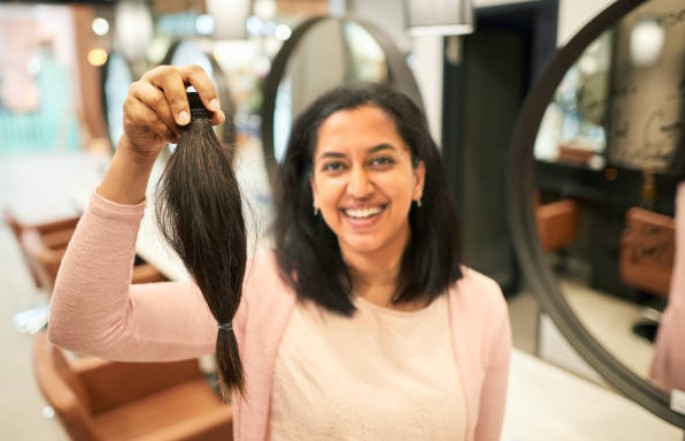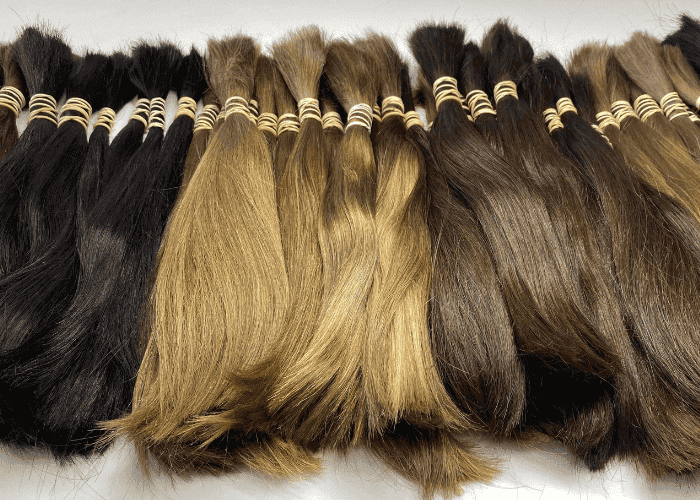If you’re shopping for a new wig, you may have decided to invest in a human hair wig. These wigs give you more styling options, a longer life span, and a natural look that blends seamlessly with your own hair. It’s a win-win for your
One question you might have been wondering is, “where does the human hair come from for wigs?”. It’s a question most people wonder about when shopping for their first human hair wig.
Our guide deep dives into the world of human hair for wigs, explaining how it’s collected and why virgin human hair is the most expensive option when investing in a new wig. Read on to find out everything you need to know about where human hair comes from for wigs.
Related: Comparison of European Hair, Indian Hair, and Chinese Hair
Related: Virgin Hair vs. Remy Hair vs. Non-Remy Hair: What are the Differences?
Related: What is the Difference Between Synthetic Hair and Human Hair?

Where human hair is sourced from for wigs
Most of the human hair you’ll find on the market comes from three sources: hair bought from people who willingly sell their hair for money, especially in developing countries; human hair from Hindu temples; another source is hair waste collected from salons.
1. Religious ceremonies in Hindu temples
India is one of the most common sources of human hair for wigs. Their high volume of human hair typically comes from Hindu temples and the religious ceremonies that happen there.
Hindus would shave their heads for good luck during these ceremonies. They believe that shaving their hair can get rid of pride and arrogance, which helps them get closer to God. They will also shave and gift their hair to god when they believe God help them fulfill their wish.
These religious ceremonies are a popular source of virgin human hair which is considered the most valuable due to its quality and untreated nature. The hair that is gathered during these ceremonies is then sold at auctions for wig manufacturers to purchase.
Indian hair is one of the most sought-after for wigs as it has a similar texture and appearance to European hair. Its characteristics mean that hair from Hindu temples can sell for $700 a pound at auction.
2. Hair grown specifically for selling
In many developing countries especially in South East Asia, in order to get the money for school or feed the family, women often willingly sell their hair to make extra cash. In the video ” The Truth About Where Hair Extensions Come From”, Shady, the editor from Refinery 29 shared with us some impressive stories of how young women cut and sell their hair. Click the link to watch on YouTube.
Most Brazilian hair used for wigs is also grown intentionally for selling. This strong and healthy hair is then cut and sold to produce high-quality human hair wigs. Cambodia is another country where women grow their hair to sell.
China is one of the most popular countries for growing hair to sell to wig manufacturers. The country is one of the leaders in wig manufacturing and uses human hair originating from both China and India in their wigs.
3. Hair ‘waste’ from salons
Another common source of human hair is the waste produced in salons. This hair is typically collected from the floor of salons and is curated together for selling. Hair collected this way is sold as ‘standard hair’ and can also come from combs and hairballs. It’s harder to determine which hair collected this way is virgin or treated hair.

Why virgin human hair is more expensive
Not all human hair is the same. While you’ll pay more for human hair than synthetic hair, there are various types available. The best type is known as ‘virgin human hair’ and comes with the highest price tag.
Virgin human hair is hair that has not been chemically processed in any way, including being permed or colored. This healthy hair typically has no split ends or greying. Unlike other hair types, it’s free of dyes and toxic chemicals that may have damaged the hair cuticles.
Virgin human hair is the highest quality available on the market, giving you the most natural and healthiest looking wig. This type of hair contains strands where the cuticles are all going in one direction.
The benefit of choosing virgin human hair is that you can style it just like your own natural hair, including choosing to dye or treat your hair. It gives you more flexibility and options than synthetic hair or lower-quality human hair. If you want to invest in a wig for daily styling, virgin human hair is the perfect investment.

When you’re shopping for a virgin human hair wig, you want to understand the characteristics of different hair types. It’s always best to choose one that matches your natural hair texture. For example, Cambodian hair is usually curlier in texture, while Brazilian hair creates a lightweight wig that is shiny with a silk-like texture.
It’s worth pointing out that virgin and Remy human hair are not always the same. Remy hair is natural hair, but it is often treated. If you want the best quality hair available, shop around for the right virgin human hair.
Does human hair for wigs come from corpses?
You might be worried about your human hair for wigs being sourced from corpses, which is an illegal and immoral form to source hair in the industry. As the market is not fully regulated internationally, smaller factories can be capable of bending the rules.
As our guide has explained, most human hair comes from men and women willing to sell their hair or from salon ‘waste’. Most of this hair comes from Brazil, Cambodia, China, and India – where most of the gathering, processing, and manufacturing occurs.

At New Times Hair, we work with reliable suppliers throughout the industry to produce premium-quality human hair wigs. Our human hair is sourced from ethical providers, undergoing regular sterilization and disinfection procedures.
If you want to purchase a wig made using high-quality 100% human hair, it’s always best to choose a premium manufacturer. If the price seems too good to be true, it’s usually a sign that the hair isn’t 100% human or ethically sourced.
When you purchase your human hair wigs from New Times Hair, you’re guaranteed a premium style that achieves a natural look with ethical and high-quality hair. We provide top-class hair replacement systems, including men’s toupees and women’s wigs and hair extensions to salons and brands across the world for reselling.
Our hair systems are available with the option of virgin human hair for brands who want to offer their customers the highest quality products. Have you got a question about where does human hair come from for wigs? Get in touch with our friendly customer team here.





1 thought on “Where Does Human Hair Come From For Wigs, Hair Systems, and Hair Extensions?”
Thank you ,and now l know all l purcase my next fine wig.
Very good I n f oration.
Thsnk b uoubsll bery .